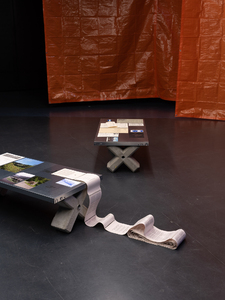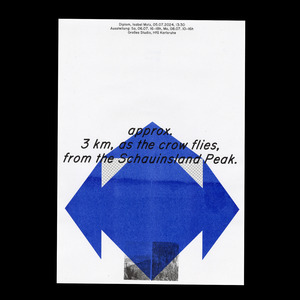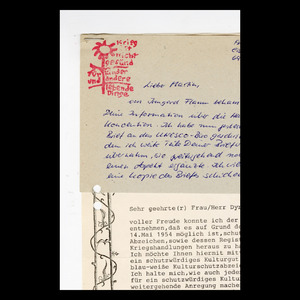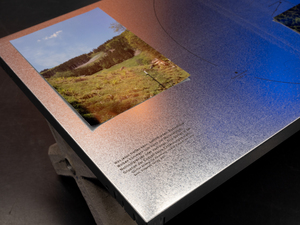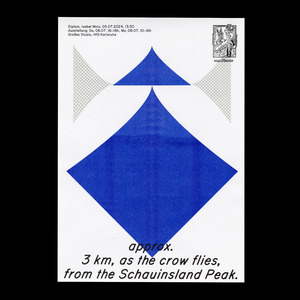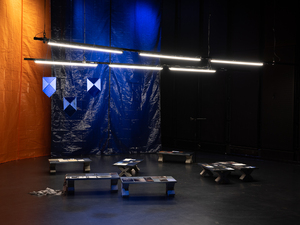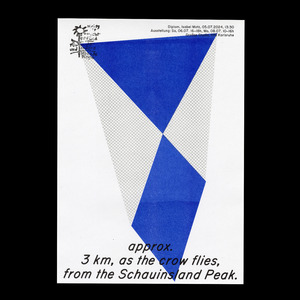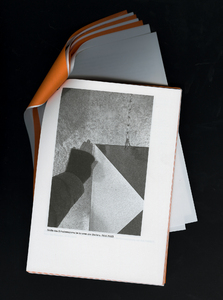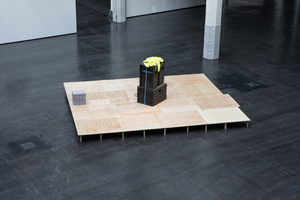"Kommunikationsdesign"
| Begriff | Kommunikationsdesign |
| Metakey | Studiengang (institution:program_of_study) |
| Typ | Keyword |
| Vokabular | HfG |
419 Inhalte
- Seite 1 von 35
approx. 3km, as the crow flies, from the Schauinsland Peak.
- Titel
- approx. 3km, as the crow flies, from the Schauinsland Peak.
- Autor/in
- Titel
- approx. 3km, as the crow flies, from the Schauinsland Peak.
- Urheberrechtshinweis
- © Isabel Motz
- Rechtsschutz/Lizenz
- Freigabe Nutzung HfG
- Projektleiter/in
- Semester
- Studiengang
- Typ der Abschlussarbeit
- Importiert am
- 04.11.2024
- Übergeordnete Sets
- 1
approx. 3km, as the crow flies, from the Schauinsland Peak.
- Titel
- approx. 3km, as the crow flies, from the Schauinsland Peak.
- Autor/in
- Titel
- approx. 3km, as the crow flies, from the Schauinsland Peak.
- Urheberrechtshinweis
- © Isabel Motz
- Rechtsschutz/Lizenz
- Freigabe Nutzung HfG
- Projektleiter/in
- Semester
- Studiengang
- Typ der Abschlussarbeit
- Importiert am
- 04.11.2024
- Übergeordnete Sets
- 1
approx. 3km, as. the crow flies, from the Schauinsland Peak.
- Titel
- approx. 3km, as. the crow flies, from the Schauinsland Peak.
- Autor/in
- Titel
- approx. 3km, as. the crow flies, from the Schauinsland Peak.
- Urheberrechtshinweis
- © Isabel Motz
- Rechtsschutz/Lizenz
- Freigabe Nutzung HfG
- Projektleiter/in
- Semester
- Studiengang
- Typ der Abschlussarbeit
- Importiert am
- 04.11.2024
- Übergeordnete Sets
- 1
approx. 3km, as. the crow flies, from the Schauinsland Peak.
- Titel
- approx. 3km, as. the crow flies, from the Schauinsland Peak.
- Autor/in
- Titel
- approx. 3km, as. the crow flies, from the Schauinsland Peak.
- Urheberrechtshinweis
- © Isabel Motz
- Rechtsschutz/Lizenz
- Freigabe Nutzung HfG
- Projektleiter/in
- Semester
- Studiengang
- Typ der Abschlussarbeit
- Importiert am
- 04.11.2024
- Übergeordnete Sets
- 1
approx. 3km, as the crow flies, from the Schauinsland Peak.
- Titel
- approx. 3km, as the crow flies, from the Schauinsland Peak.
- Autor/in
- Titel
- approx. 3km, as the crow flies, from the Schauinsland Peak.
- Urheberrechtshinweis
- © Isabel Motz
- Rechtsschutz/Lizenz
- Freigabe Nutzung HfG
- Projektleiter/in
- Semester
- Studiengang
- Typ der Abschlussarbeit
- Importiert am
- 04.11.2024
- Übergeordnete Sets
- 1
approx. 3km, as. the crow flies, from the Schauinsland Peak.
- Titel
- approx. 3km, as. the crow flies, from the Schauinsland Peak.
- Autor/in
- Titel
- approx. 3km, as. the crow flies, from the Schauinsland Peak.
- Urheberrechtshinweis
- © Isabel Motz
- Rechtsschutz/Lizenz
- Freigabe Nutzung HfG
- Projektleiter/in
- Semester
- Studiengang
- Typ der Abschlussarbeit
- Importiert am
- 04.11.2024
- Übergeordnete Sets
- 1
approx. 3km, as the crow flies, from the Schauinsland Peak.
- Titel
- approx. 3km, as the crow flies, from the Schauinsland Peak.
- Autor/in
- Titel
- approx. 3km, as the crow flies, from the Schauinsland Peak.
- Urheberrechtshinweis
- © Isabel Motz
- Rechtsschutz/Lizenz
- Freigabe Nutzung HfG
- Projektleiter/in
- Semester
- Studiengang
- Typ der Abschlussarbeit
- Importiert am
- 04.11.2024
- Übergeordnete Sets
- 1
approx. 3km, as. the crow flies, from the Schauinsland Peak.
- Titel
- approx. 3km, as. the crow flies, from the Schauinsland Peak.
- Autor/in
- Titel
- approx. 3km, as. the crow flies, from the Schauinsland Peak.
- Urheberrechtshinweis
- © Isabel Motz
- Rechtsschutz/Lizenz
- Freigabe Nutzung HfG
- Projektleiter/in
- Semester
- Studiengang
- Typ der Abschlussarbeit
- Importiert am
- 04.11.2024
- Übergeordnete Sets
- 1
approx. 3km, as. the crow flies, from the Schauinsland Peak.
- Titel
- approx. 3km, as. the crow flies, from the Schauinsland Peak.
- Autor/in
- Titel
- approx. 3km, as. the crow flies, from the Schauinsland Peak.
- Urheberrechtshinweis
- © Isabel Motz
- Rechtsschutz/Lizenz
- Freigabe Nutzung HfG
- Projektleiter/in
- Semester
- Studiengang
- Typ der Abschlussarbeit
- Importiert am
- 04.11.2024
- Übergeordnete Sets
- 1
approx. 3km, as. the crow flies, from the Schauinsland Peak.
- Titel
- approx. 3km, as. the crow flies, from the Schauinsland Peak.
- Autor/in
- Titel
- approx. 3km, as. the crow flies, from the Schauinsland Peak.
- Urheberrechtshinweis
- © Isabel Motz
- Rechtsschutz/Lizenz
- Freigabe Nutzung HfG
- Projektleiter/in
- Semester
- Studiengang
- Typ der Abschlussarbeit
- Importiert am
- 04.11.2024
- Übergeordnete Sets
- 1
approx. 3km, as the crow flies, from the Schauinsland Peak.
- Titel
- approx. 3km, as the crow flies, from the Schauinsland Peak.
- Autor/in
- Titel
- approx. 3km, as the crow flies, from the Schauinsland Peak.
- Urheberrechtshinweis
- © Isabel Motz
- Rechtsschutz/Lizenz
- Freigabe Nutzung HfG
- Projektleiter/in
- Semester
- Studiengang
- Typ der Abschlussarbeit
- Importiert am
- 04.11.2024
- Übergeordnete Sets
- 1
Ausstellungsansicht "A man in the shape of..."
- Titel
- Ausstellungsansicht "A man in the shape of..."
- Kategorie
- Titel
- Ausstellungsansicht "A man in the shape of..."
- Urheberrechtshinweis
- © Calvin Kudufia
- Rechtsschutz/Lizenz
- Freigabe Nutzung HfG
- Beziehung/Funktion
- Projektleiter/in
- Semester
- Studiengang
- Typ der Abschlussarbeit
- Importiert am
- 31.05.2024
- Übergeordnete Sets
- 1
